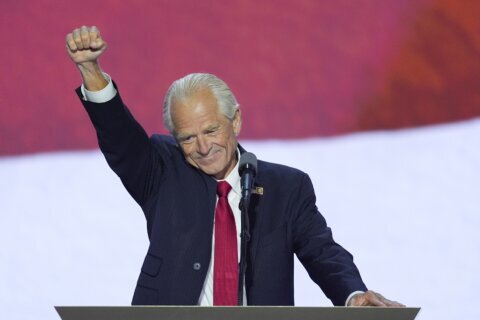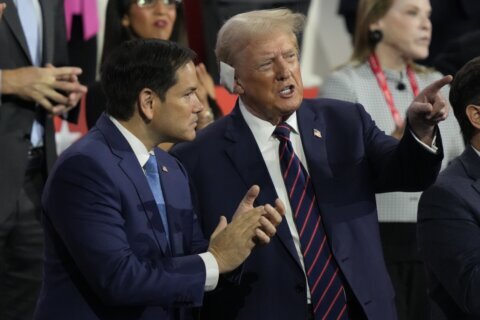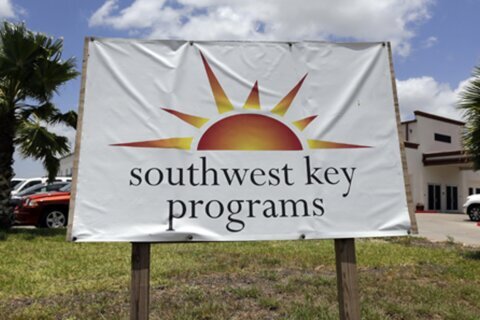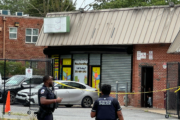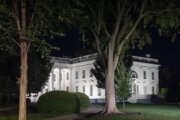Like the star of an arena tour, a spotlight illuminated the glittering, golden vessel carried by a Catholic bishop. Inside, it held a round communion host, which Catholics believe is the full presence of Jesus in the appearance of bread.
The bishop placed it on an altar at the center of Lucas Oil Stadium in Indianapolis on Wednesday evening. It was the culmination of more than two years of preparations and two months of four cross-country pilgrimages destined for the Midwestern city and the first National Eucharistic Congress in more than 80 years. Thousands of Catholics converged for the start of a five-day gathering focused on devotion to the Eucharist and the core Catholic doctrine that it is not merely a symbol but is the reality of Jesus among them.
The congress reflects bishops’ attempt to revive traditional devotions that have waned in recent generations, even as some have questioned how this movement was forged. There has been debate involving politics as well as disputed research over whether most Catholics actually believe the doctrine.
The stadium remained quiet for a half hour of devotional adoration, followed by prayers, multiple speakers and an extended session led by a worship band in front of a stage set and lighting that simulated the look of gothic stained-glass windows. The music ranged from the solemn hymn “Holy God, We Praise Thy Name” to contemporary, electronic-infused music that more resembled that of an evangelical megachurch than of a Mass songbook.
Bishop Andrew Cozzens, who brought in the Eucharist, read a gospel passage in which Jesus calls himself the bread of life.
“We want every Catholic to realize that you alive in the Eucharist and to encounter your love,” said Cozzens, of the Diocese of Cookston, Minnesota, in an extended prayer.
Attendees expressed enthusiasm.
“It’s a beautiful thing to see so many families, religious (order members), priests, the whole church here represented,” said Sister Teresa Christine DesGeorges, one of several members of the Carmelite Sisters of the Most Sacred Heart of Los Angeles who traveled from California. “There was something about being in that room with so many thousands of people for the same reason that reignites the faith.”
There were nine National Eucharistic Congresses between 1895 and 1941, an era when Catholics also gathered by the tens of thousands in stadiums and parades in their home cities for rosary prayers, Eucharistic adoration and other traditional devotions. Such events displayed the growing numbers and clout of the Catholic population, then largely defined by their urban neighborhoods and parishes made up of European immigrant families.
By the 1950s, mass devotional gatherings had declined, and liturgical reforms of the 1960s put emphasis on other areas, such as preaching, lay involvement and congregational singing.
Many churches retained such practices on smaller scales, but this event coincides with a push by some to revive many older traditions, including the Latin Mass.
A 2021 document from U.S. bishops, “The Mystery of the Eucharist in the Life of the Church,” arose amid debate over whether bishops should withhold Communion from Catholic politicians like President Joe Biden or Rep. Nancy Pelosi, Democrats who supported abortion rights. Following cautionary signals from the Vatican, the document ultimately avoided that direct question, though it called on Catholics to examine whether they align with church teachings.
Some bishops also said the Eucharistic doctrine needed a fresh emphasis, citing a 2019 survey that found most church members didn’t believe it.
But some researchers have questioned the phrasing of that survey.
A follow-up poll in 2022 — by the Georgetown University-affiliated Center for Applied Research in the Apostolate — used multiple phrasings and found that 64% of Catholics, expressed belief in Jesus’ presence in the Eucharist in at least one response, as did virtually all who attended Mass weekly.
Among the main speakers Wednesday was Pope Francis’ diplomatic representative to the U.S., Cardinal Christophe Pierre. While many traditionalist Catholics have been disenchanted with Pope Francis, such as with his outreach toward LGBTQ+ people, Francis has endorsed the Eucharistic revival and personally blessed the custom-made monstrance used to display the Communion host at the congress.
Pierre underscored themes of the Francis papacy, including “synodality” — church-wide dialogue — and bridging cultural divides.
“Our encounter with Christ’s real presence in the sacrament opens us to an encounter with him in the rest of our lives,” he said. “Not only is he present in our family, friends, communities, but he is also present in our encounters with people from whom we would otherwise consider ourselves divided. This might include people from a different economic class or race. People who challenge our way of thinking, people whose perspective is informed by experiences that differ greatly from our own.”
Another speaker, Sister Bethany Madonna of the Sisters of Life, spoke of how Eucharistic adoration is integral to the group’s work with pregnant women considering abortion.
The five-day event includes stadium gatherings, breakout sessions, Masses, rosary prayers and more. In keeping with the traditionalist tenor, there are displays of saints’ relics and of a replica of the Shroud of Turin, which some believe is Jesus’ burial cloth.
The event included greetings in English and Spanish, reflecting the large Hispanic presence amid the diverse crowd
Logistical delays led to long registration lines Wednesday, but the stadium gradually filled to roughly 70 percent of capacity.
Tim Glemkowski, chief executive officer of the congress, said he anticipates 50,000 attendees over the course of the congress. “We did a lot of things over the past couple of years to make it affordable,” he said, including some discounted tickets as well as free admission for young children.
Event organizers have studiously emphasized that it’s not political and wasn’t timed to coincide with the Republican National Convention.
But the event comes during a conservative Catholic moment in U.S politics. Even as the Eucharistic gathering was underway, Ohio Sen. J.D. Vance, a Catholic convert, accepted the GOP nomination as the vice presidential running mate of Donald Trump. And some U.S. Catholics are voicing their belief that God spared Trump’s life in Pennsylvania on July 13, associating the assassination attempt with an apparition of the Virgin Mary that same date in 1917 in Fatima, Portugal.
Catholics voters are far from monolithic and are often seen as a crucial swing voters, though traditionalist Catholics are often supportive of conservative candidates and policies such as opposition to abortion.
Glemkowski said he’s aware of the current events, but “everyone who’s here and everyone watching at home is clear, what this is about is the church unified and encountering Jesus in the Eucharist. As long as we stay focused on that, people will see this is not a political movement but a movement of grace.”
___
Freelance photographer Doug McSchooler in Indianapolis contributed to this report.
___
Associated Press religion coverage receives support through the AP’s collaboration with The Conversation US, with funding from Lilly Endowment Inc. The AP is solely responsible for this content.
Copyright © 2024 The Associated Press. All rights reserved. This material may not be published, broadcast, written or redistributed.

